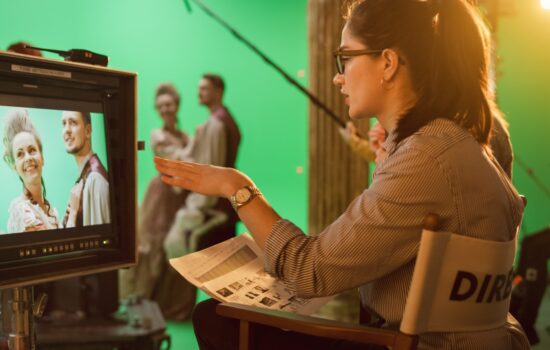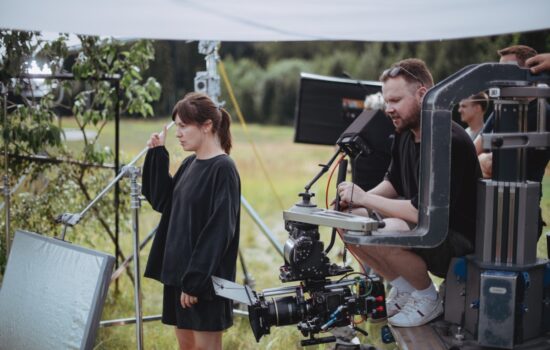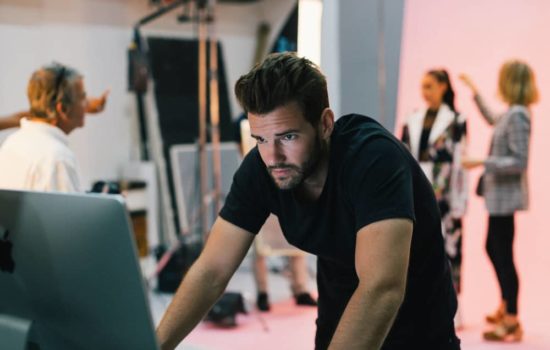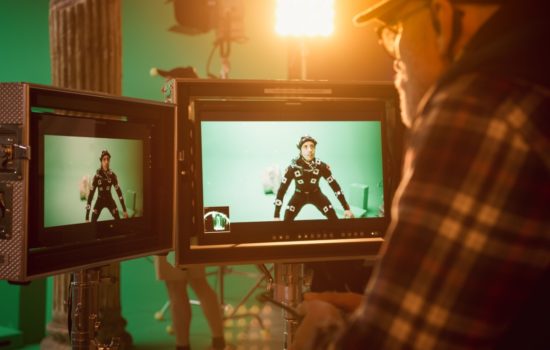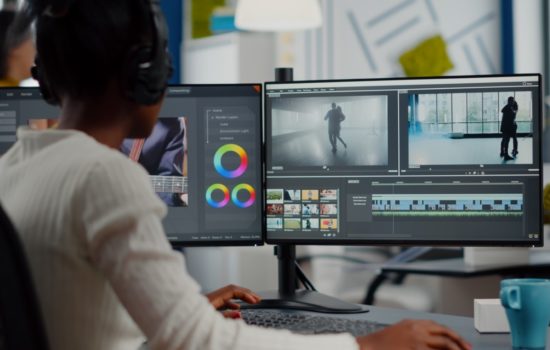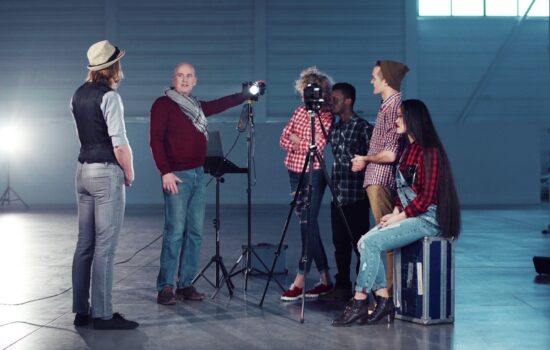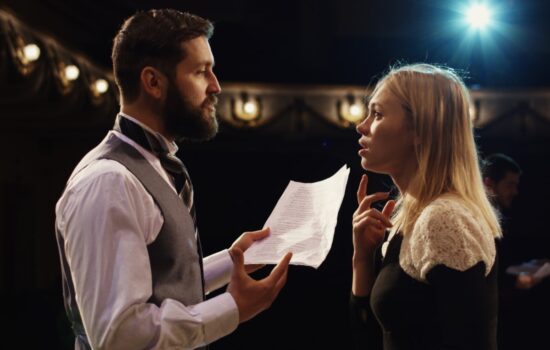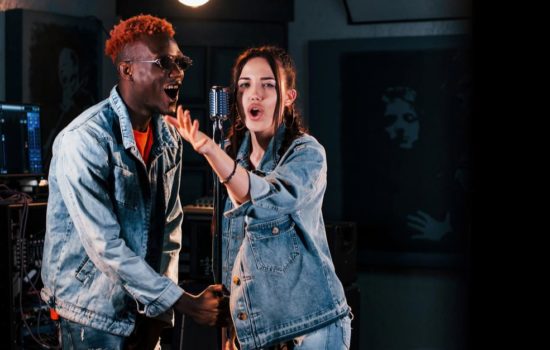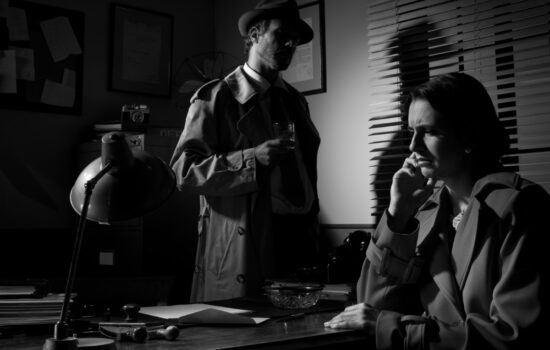Storyboard Artist
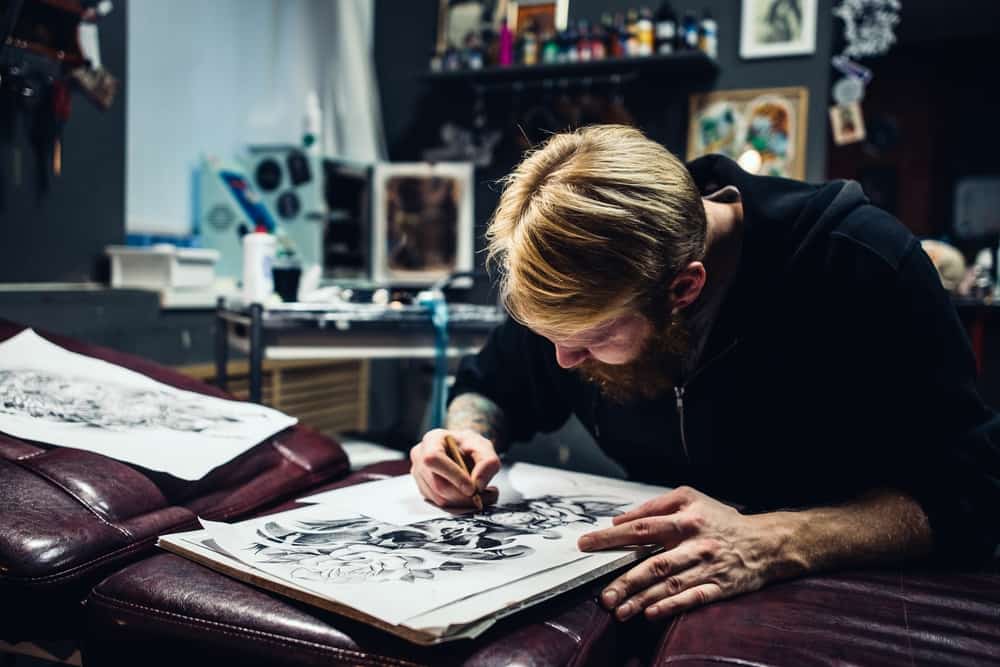
How To Become a Storyboard Artist
People also ask
Career Description
Douglas Einar Olsen, Storyboard Artist on shows including Little Big Awesome and Rick and Morty describes what he does:
“In animation, Storyboard Artists generate what you might call ‘the raw footage’ of the show. We take a script and start visualizing it by creating drawings depicting each story beat. We draw them in sequence on a timeline so we begin to have something to ‘watch.’
“Sometimes we’re also given a radioplay (an audio file with temporary dialogue) so we can fine-tune the timing closer to how the episode will run. Eventually, these pieces of ‘footage’ are edited together to create a rough draft of the episode — at work, we call this ‘the animatic.’”
Olsen explains that Storyboard Artists are one part of the team that generates the animatic. “Sometimes we plot out entire scenes, sometimes we make fixes based on the Director or Writer’s notes. Other times we need to punch up acting or add special effects animation. As you might imagine, my day-to-day is mostly lots and lots of drawing!”
On Rick and Morty, Olsen is part of a four-person team: three Storyboard Artists and the Director. He lays out the working dynamic: “We start with a kick-off meeting with the Show Runner and department heads. Here, we analyze the episode script and discuss specific areas that require storyboard attention.
“Our Director then breaks the episode into chunks, allocating them to each member of the team. We then retreat to our storyboard lair (actually just an office!) and begin what is called a ‘thumbnail pass’: a very simple plotting out of a scene.”
Olsen says this is his favorite part of the process because “it offers the most creative freedom for us Board Artists — we begin pulling the episode out of the ether and it’s where we get to pitch our most wild ideas.”
Olsen elaborates, “Once the thumbnail pass is ready, it is reviewed by the Director who gives notes. We incorporate these into our sequences and the clean-up/streamlining process begins. Rinse and repeat for eight or nine weeks.”
Once Olsen’s team has a tight, draft version of the future episode, it is ready to be shipped to the Animation Department to be fully animated for television.
What is a Storyboard Artist do?
The job of a Storyboard Artist is to realize the vision of a Director, Cinematographer, or Producer in terms of how they want a film to visually unfold. This means creating either by hand or through computer imagery a depiction of how each scene will progress from shot to shot through a series of panels.
Salary
The average annual salary for Storyboard Artists is approximately $114,300. The annual salary for Storyboard Artists ranges from $85,000 to $149,000.
On union shows, Olsen feels the earnings are healthy: “Plenty of Storyboard Artists enjoy earnings in the high six figures. We’re paid weekly — as the work is ‘seasonal,’ you’re booked for the production cycle of the show season. If you’re lucky, that show will be renewed and you’ll continue working until it’s canceled.”
Olsen warns that any hiatus period is unpaid so he’ll freelance if he needs to continue making money. “The animation union provides us with healthcare — as long as you accumulate enough hours, the health coverage extends over any show hiatus,” he adds.
What is a Storyboard Artist salary?
Multiple factors impact what a Storyboard Artist can make in a given year. On average, they make just over $90,000 annually, but it’s important to keep in mind that this figure can fluctuate depending on their experience, union status, and type of gigs they are hired for.
Hey, what do you think about trying our new Film Career HelperFilm Career Helper really quick? It’s totally free and could help get your career moving fast! Give it a try. It’s totally free and you have nothing to lose.
Career Outlook
All in all, Olsen feels the storyboard lifestyle, although sometimes crazy, is pretty great. He explains that his work is seasonal: “I’m booked for roughly ten or eleven months of the year with one or two months off to focus on personal projects, freelance, or travel. Occasionally I’ll accept freelance work if it’s a really cool project, but I try not to do it too often because it eats into my nights and weekends which can be stressful.”
Olsen offers some sterling advice for artists starting out: “Retain your balance at the beginning; initially, there’s a strong urge to prove yourself when you’re hired on a new job and you give yourself 100% to the project. Do not do this! Studios will take advantage and suck out all of your creative juices!
“Absolutely work hard, but save a little creative energy for your own projects, whether it’s going to figure drawing, doing some GIFs or just drawing for pleasure. This will sustain a healthier mindset and allow you to remain more creatively vibrant.”
Career Path
Before moving into storyboarding, Olsen was doing all kinds of illustration work and fine art. Only when he hit 30 did he break into television animation: “I’ve had a wonky trajectory. I knew I had some interest in storyboarding and directing but didn’t quite understand how that translated into a career beyond picking up freelance gigs or maybe joining some kind of commercial shop.”
He emphasizes the need to explore your own voice, even before breaking into the industry: “I was always exploring various creative interests, attempting to pull off different personal projects — often they burned out in various ways, but I was always learning and expanding my creative voice.”
Olsen suggests that building your own portfolio means you’ll have work to show when the time is right: “One day I was lucky enough to find myself in the right place at the right time (with the right kind of things in my portfolio) and met a new studio-mate who had contacts in the TV animation industry. After getting to know me and my work, he graciously recommended me for a position on Adult Swim’s The Venture Bros.”
It wasn’t a straight step into a Storyboard position, though: “I started on Background Design and, although there’s a ton of narrative in a character’s environment, I still had my heart set on storyboards so I began hanging out in their department, asking questions, watching how they did their job.”
Eventually, Olsen was offered a Storyboard Revisionist position and started gaining real, in-show experience. “Honestly, from then on, it was simply a matter of demonstrating responsibility, producing solid work, and being chill to work with — that last point is why people continue to recommend me within the industry.”
Next Olsen storyboard tested for a show called Axe Cop on Fox where he was eventually promoted to Director. “That led me to my job on Rick and Morty and even storyboarding my first feature, the upcoming live-action Sonic The Hedgehog movie.”
Olsen lays out his current aims, ones he shares with many of his peers: “My short term goal is to move up to Director here on Rick and Morty, but I’m also trying to sell my own shows and direct/produce short projects like Lil Dicky’s ‘Professional Rapper.’”
Olsen broke into the industry as a Background Designer but the entry-level job is a Storyboard Revisionist. He says there are some internships out there worth looking into but reiterates, “I’m more an advocate of being a self-starter and generating your own work to put out there regularly. Try and get that in front of the right people.”
He suggests comics are not unrelated: “Comics are definitely a cousin to storyboarding — Cartoon Network occasionally hires out of the indie comic scene if you’re making a little noise there.” He goes on to recommend working as a Storyboard Artist for commercials: “It’s a healthy way to get your feet wet and make money as you go. I’ve heard of folks starting in commercials and eventually moving all the way up to Marvel features.”
- “I’d like to mention something my boss, Justin Roiland said on one of his podcasts. People often ask him how to get into ‘the biz’ and his response is ‘just make stuff.’” But what does that mean? Olsen elaborates: “Commit to one year and dedicate yourself to completing one thing each month. I stress ‘completing’ because executing something to completion is how you reap the full benefit of the creative exercise. If you see anything to fruition, you can reflect clearly on what you produced.
- What ‘things’ count? Olsen reassures, “It could be something simple like an illustration, a comic book page, or a GIF; anything that can realistically be completed in a one-month timeframe. By the end of the year you’ll have twelve ‘things’ you’ve made and most likely a far stronger idea of the direction you’re moving in, your strengths, your challenges. When that gatekeeper appears, you can say, ‘Look at the twelve cool things I’ve made!’”
Is being a Storyboard Artist hard?
Perhaps the most challenging part of being a Storyboard Artist is being able to translate from words to images what a Director or Cinematographer is describing for a scene. Some creatives may find it difficult to understand this vision if the person articulating it lacks the ability to be detailed and vivid in their descriptions. Productions tend to evolve drastically during the pre-production stage as well, which might mean multiple revisions to the storyboards. All that being said, the professional life of a Storyboard Artist can be a highly rewarding one.
Experience & Skills
With purely creative arts, practical experience and aptitudes are very personal. Olsen highlights one particular skill, essential for him: “Work hard to recognize and connect with your artistic voice. I would describe it as developing your ‘taste.’ This is less a style or way you draw, it’s more like keeping track of what you enjoy in art or film and exploring those same themes yourself.”
Olsen stresses a willingness to experiment: “Experimentation comes with lots of failure, which means learning. This builds confidence and (hopefully) a boldness of vision. Lots of people out there can draw well, but if you’re offering a ‘bold vision’ or ‘taste’ in your work, that’s something that will help any artist stand out.”
Studying other media akin to storyboarding also helps strengthen your storytelling language. Olsen explains, “I’m actually taking an acting class right now to get a better sense of how to put life into my drawings and communicate with Actors from their point of view. Any secondary interests are part of your unique recipe and artistic take on things.”
“Being easy to work with is key,” says Olsen. “You want to be a combination of easy-going, bringing ideas to the table and getting things done. So much of getting work in the industry is based on recommendations — nobody recommends anyone who is not brilliant to work with!”
Olsen stresses that Storyboard Artists need to be cool and respectful under pressure. “One show I was directing had a Storyboard Revisionist who would only address a maximum of 40% of my notes — I guess he thought the rest was optional? Perhaps what was already there looked good enough to him? As you can imagine, I wasn’t interested in working with him again, so be mindful of what’s being asked of you!”
Education & Training
Olsen is crystal clear about where to start: “Training begins with drawing as much as possible. Study the figure, do landscape and location drawing, keep a sketchbook. While drawing, you can even create simple story beats by drawing boxes, filling them with whatever you see around you. Any images in sequence — even random ones — will begin to give you a sense of what’s possible in storytelling.”
Olsen also emphasizes analyzing your favorite films, staying attentive to how they stage scenes, compose shots, build tension and make you laugh. He mentions another widely available resource: “There’s a great PDF I always recommend: a storyboard bible by Brad Bird called Storyboarding the Simpsons Way. Google it and access it for free. It covers a lot of the basic mechanics of visual storytelling — even my professional colleagues (myself included) revisit it often.”
As for formal education, Olsen suggests that any art school with an animation or illustration department is a solid place to build fundamental skills. “CalArts, SCAD, SVA, and Ringling are all schools with notable animation programs. In L.A. there are several industry-specific schools like Concept Design Academy or Gnomon Academy. Olsen also recommends the classes offered by the Storyboard Artists’ union, The Animation Guild.
Olsen reiterates a truism for all creative artists: “The essential part is getting your hands dirty and teaching yourself as much as possible. For me personally, I was 70% self-taught. The other 30% came from intuitive Teachers who knew to push harder where I was already going. Plus, keep an eye on your creative peers — often, they can teach you just as much.”
Additional Resources
The Animation Guild comes highly recommended; Olsen mentions their website which has resources for classes or networking/industry events.
He goes on: “There’s also the CTN Animation Expo, a popular, annual event where aspiring animation people go to network and hustle. I dig other events around L.A. too, such as CALA (Comic Arts Los Angeles — a small press comics fest), and the Loop De Loop monthly GIF fest.”
FAQ
What is the single biggest suggestion you would give to someone wanting to get into this career?
“Research your interests hard and explore those themes in your work.”
What’s the #1 mistake people make when trying to get into this career?
“Loading up your portfolio with too much stuff. Don’t include every project you’ve ever done. Be specific; if you’ve zeroed in on storyboarding, include storyboards and maybe some animation samples as the main event, not everything you did at school. A laser-focused portfolio shows me that person is serious.”
What is the question people should ask about this career but rarely do?
“It can take a long time to find your way in, often years. It’s imperative that you don’t give up — continue to make work and study the craft while finding other ways to survive. This can be the real challenge — do you have the patience and dedication for that?”
If you could describe in one word what makes you successful, what would it be?
“Perseverance.”
Sources

Douglas Einar Olsen
Douglas Einar Olsen grew up in the forested suburbs of Long Island, NY in the town of Smithtown. He began his artistic career as a founding member of the “Ninja Turtle Drawing Club” in Mrs. Bell’s 3rd-grade class, enjoyed making parody films with his friends and eventually found himself under the tutelage of local Illustrator and Teacher, Jeffrey K Fisher.
Olsen attended the Rhode Island School of Design (‘04) as an Illustration major, where he recently served as a Visiting Artist. There, he developed a passion for visual storytelling as well as travel, spending his senior year abroad in Rome.
Post-college, he continued his travels working in Berlin, Tuscany and Amsterdam, eventually settling in Brooklyn where he continued his artistic and professional development practicing fine art, freelance designing and working as an art handler.
He eventually came into contact with the TV animation industry via a studio-mate who introduced him to the producers of adult swim’s The Venture Bros. This led to his first position on an industry project as a Background Designer, then to an ongoing career as a Storyboard Artist and Director in animation, with credits including Rick and Morty, Major Lazer, Axe Cop, Golan the Insatiable and Little Big Awesome.
Olsen recently completed storyboards for his first feature film coming out this November, Sonic the Hedgehog.
References
- 1Multiple. "Storyboard Artist Salaries". Glassdoor.com. published: Mar 12, 2018. retrieved on: Dec 15, 2019
